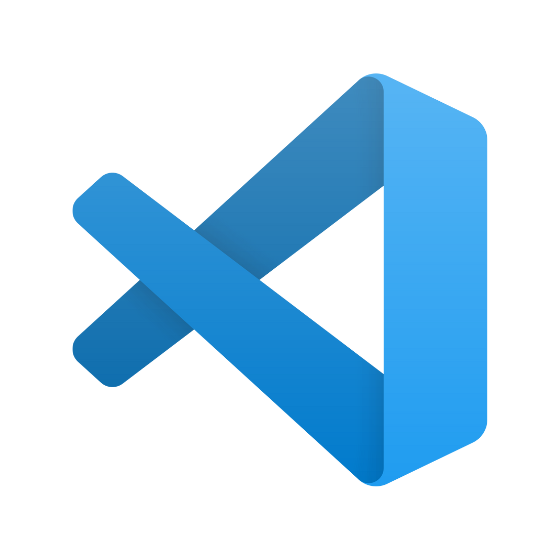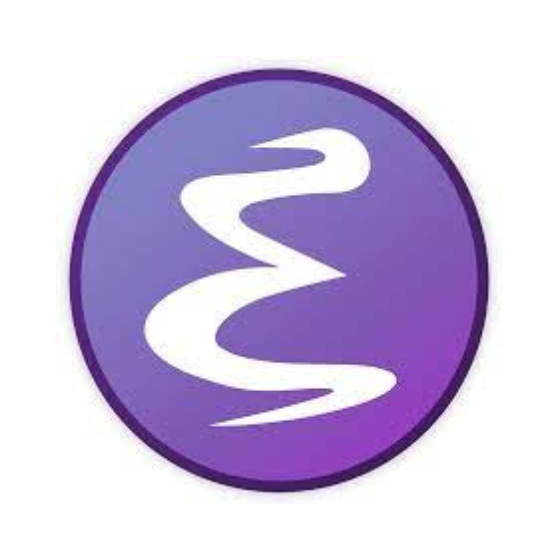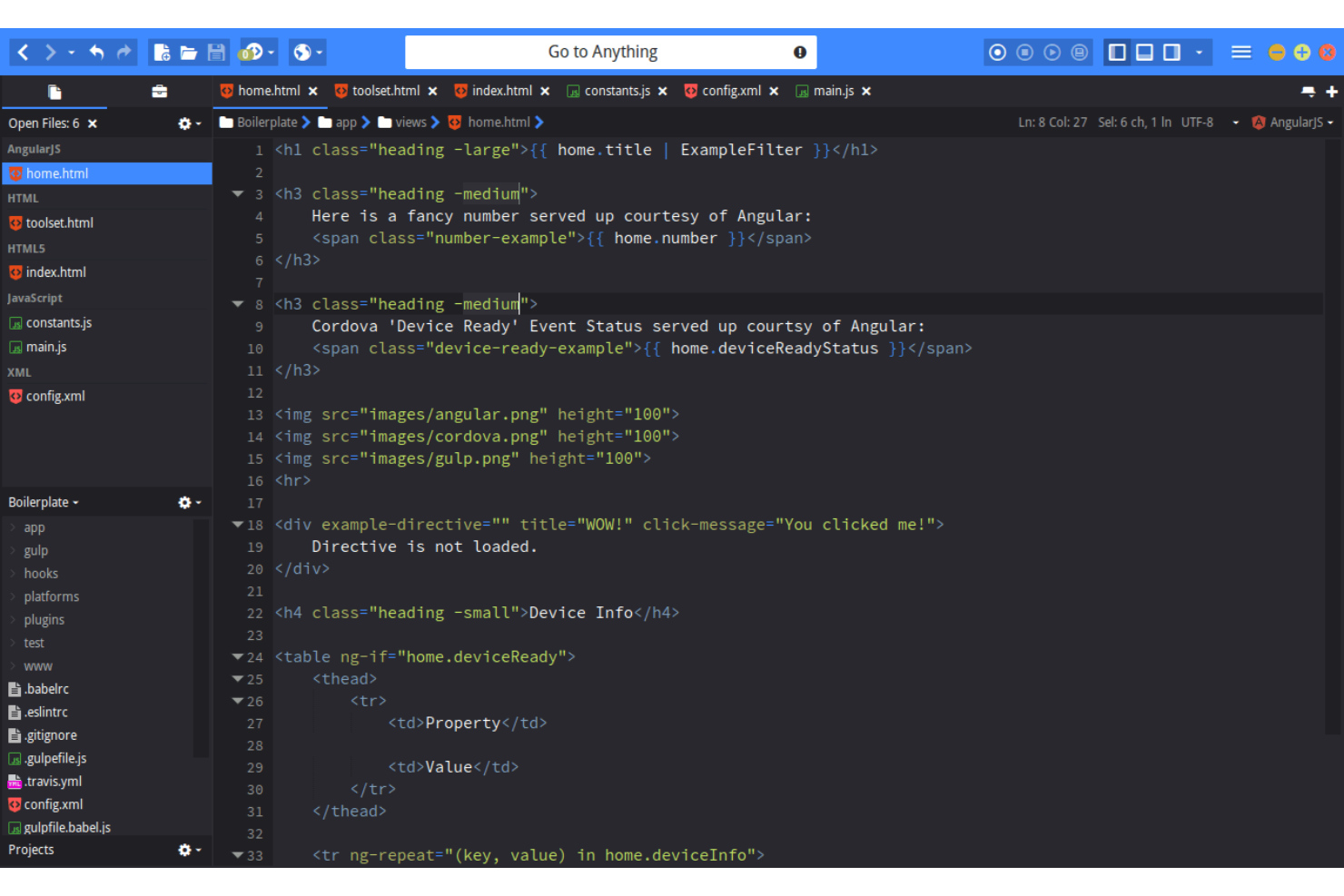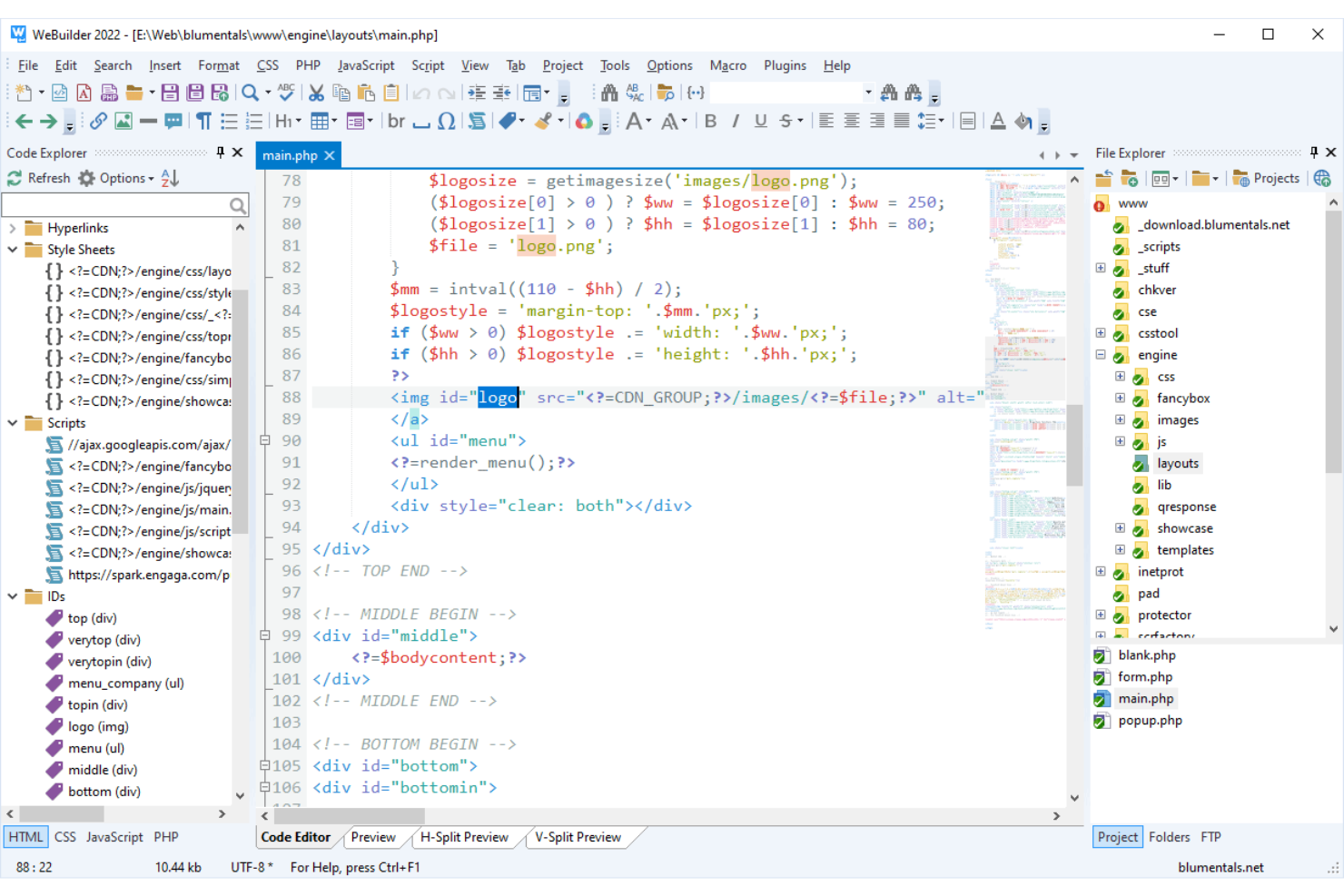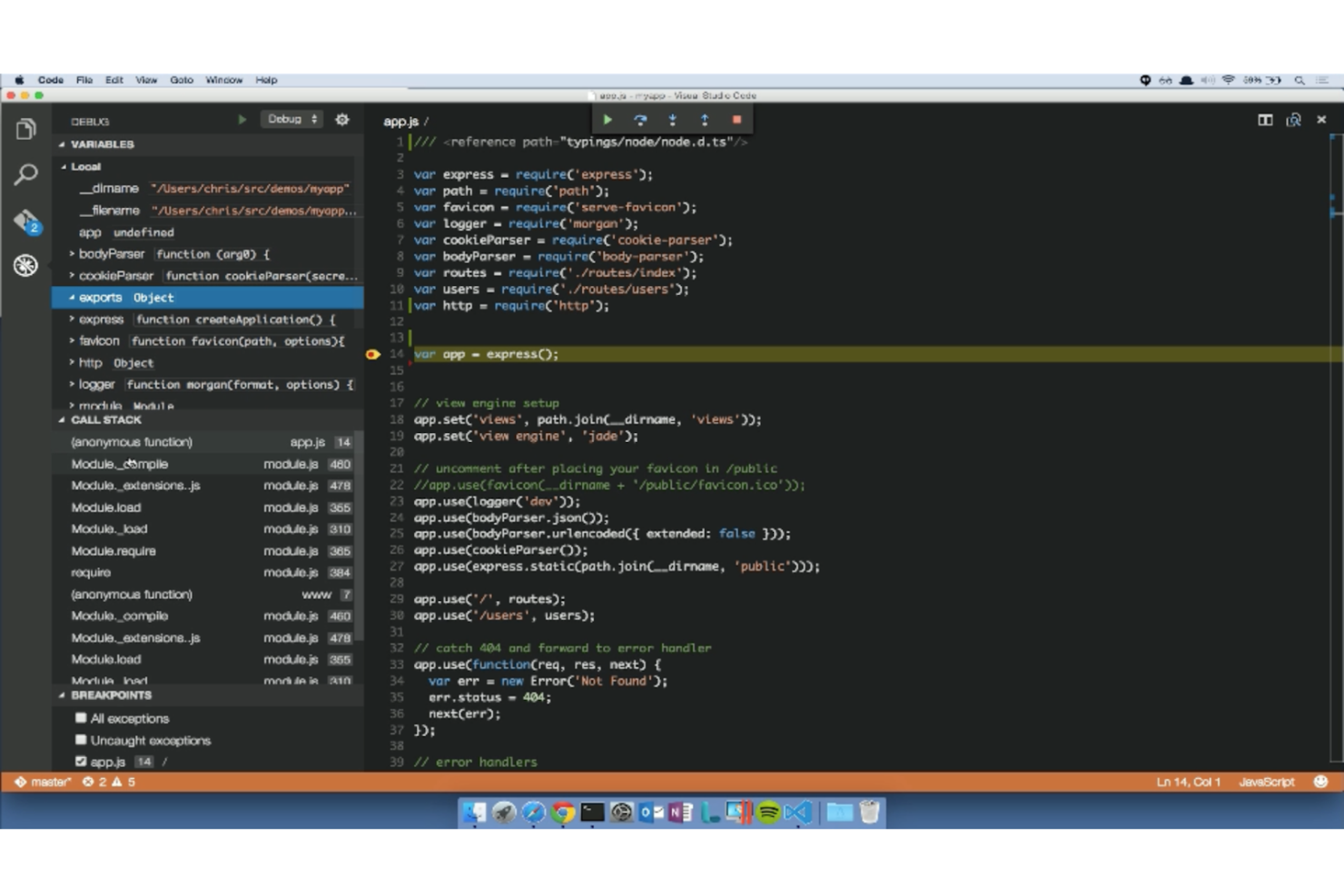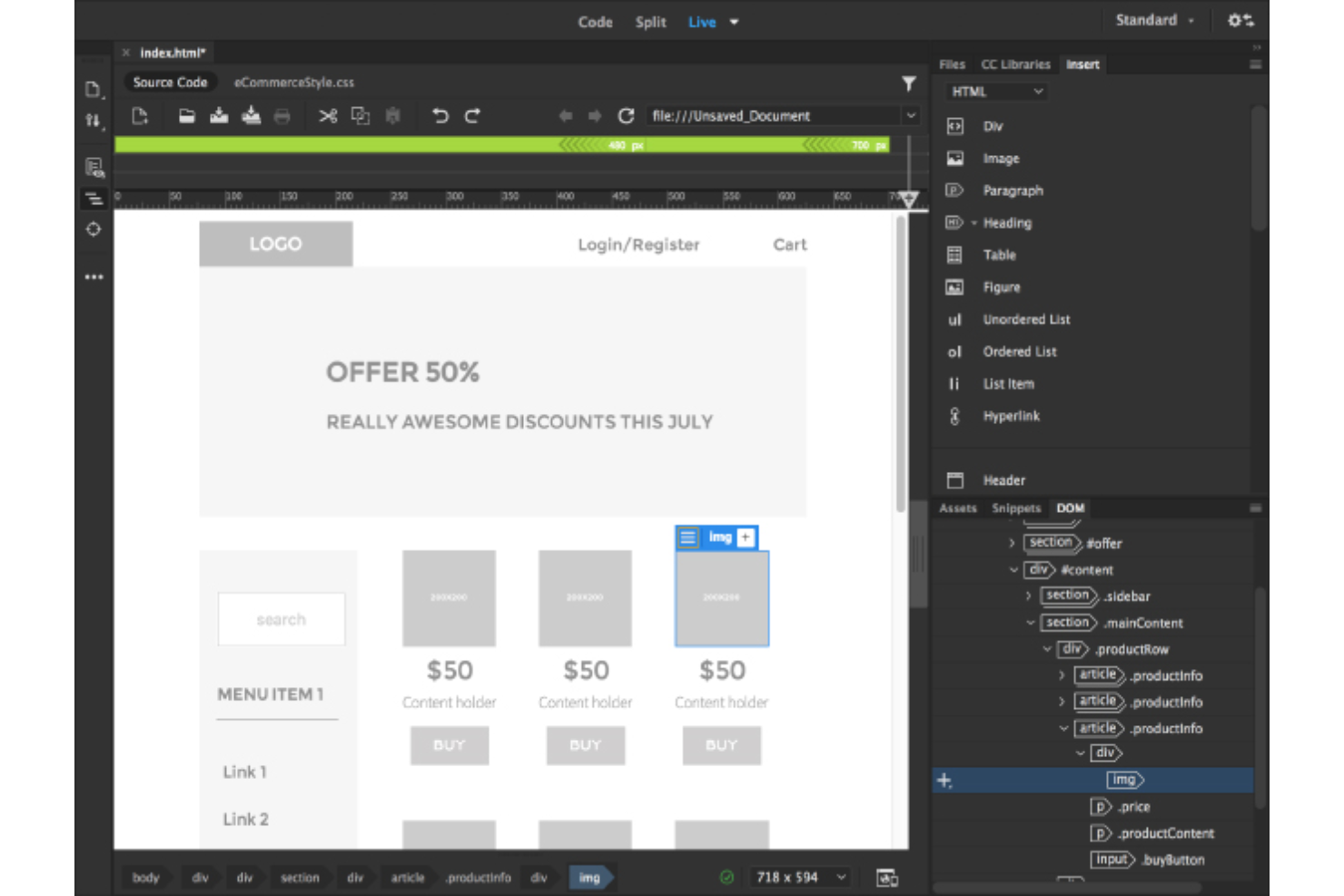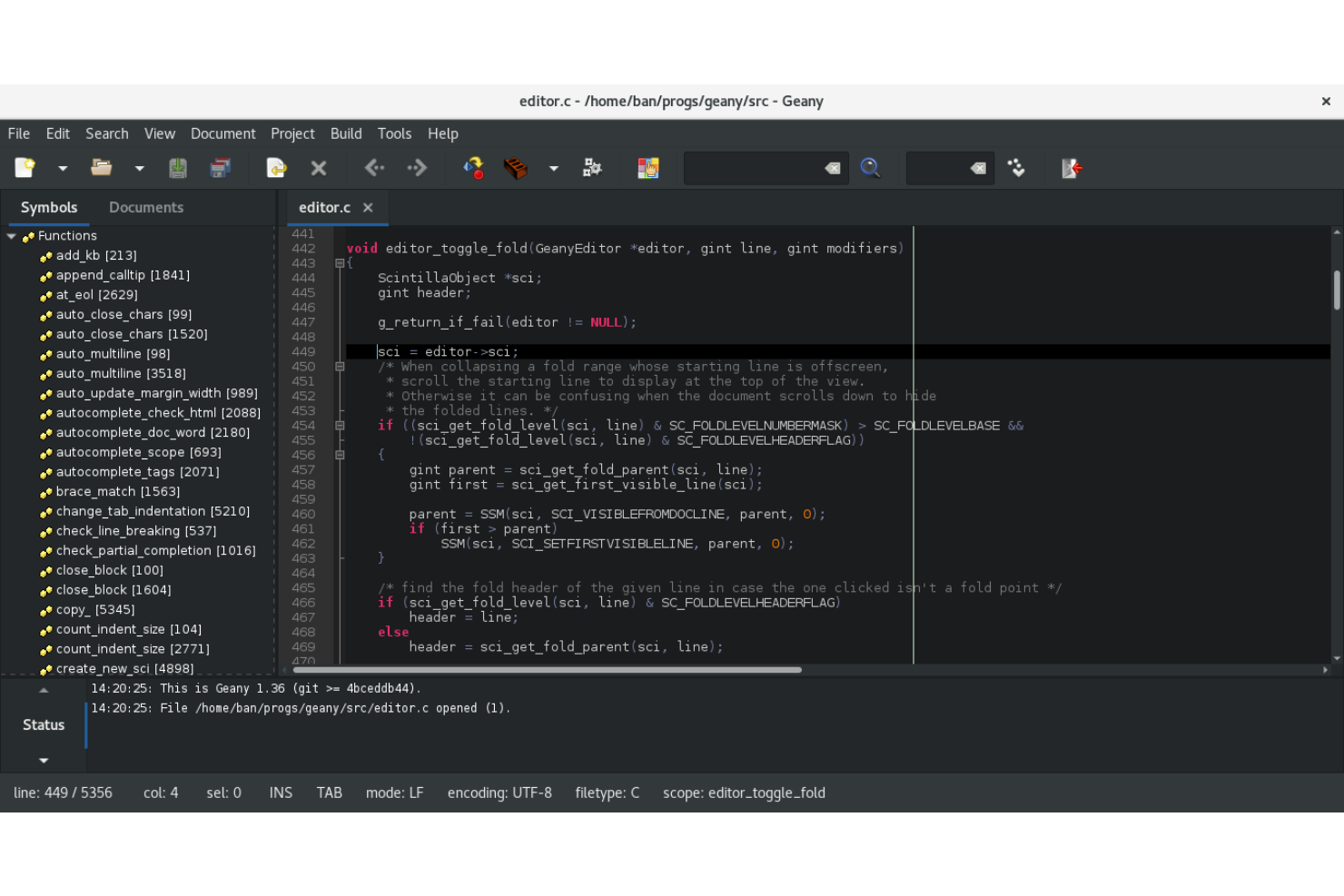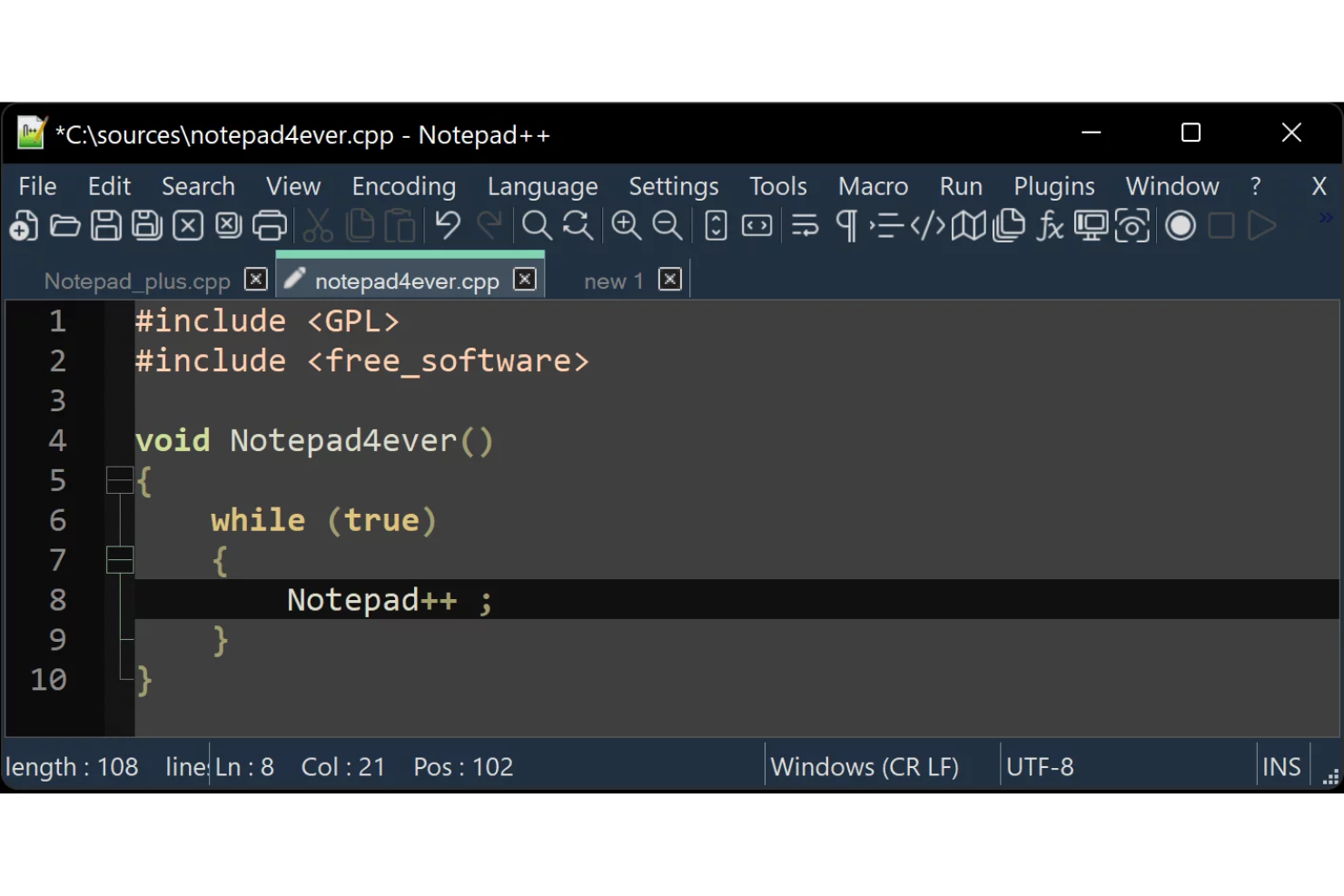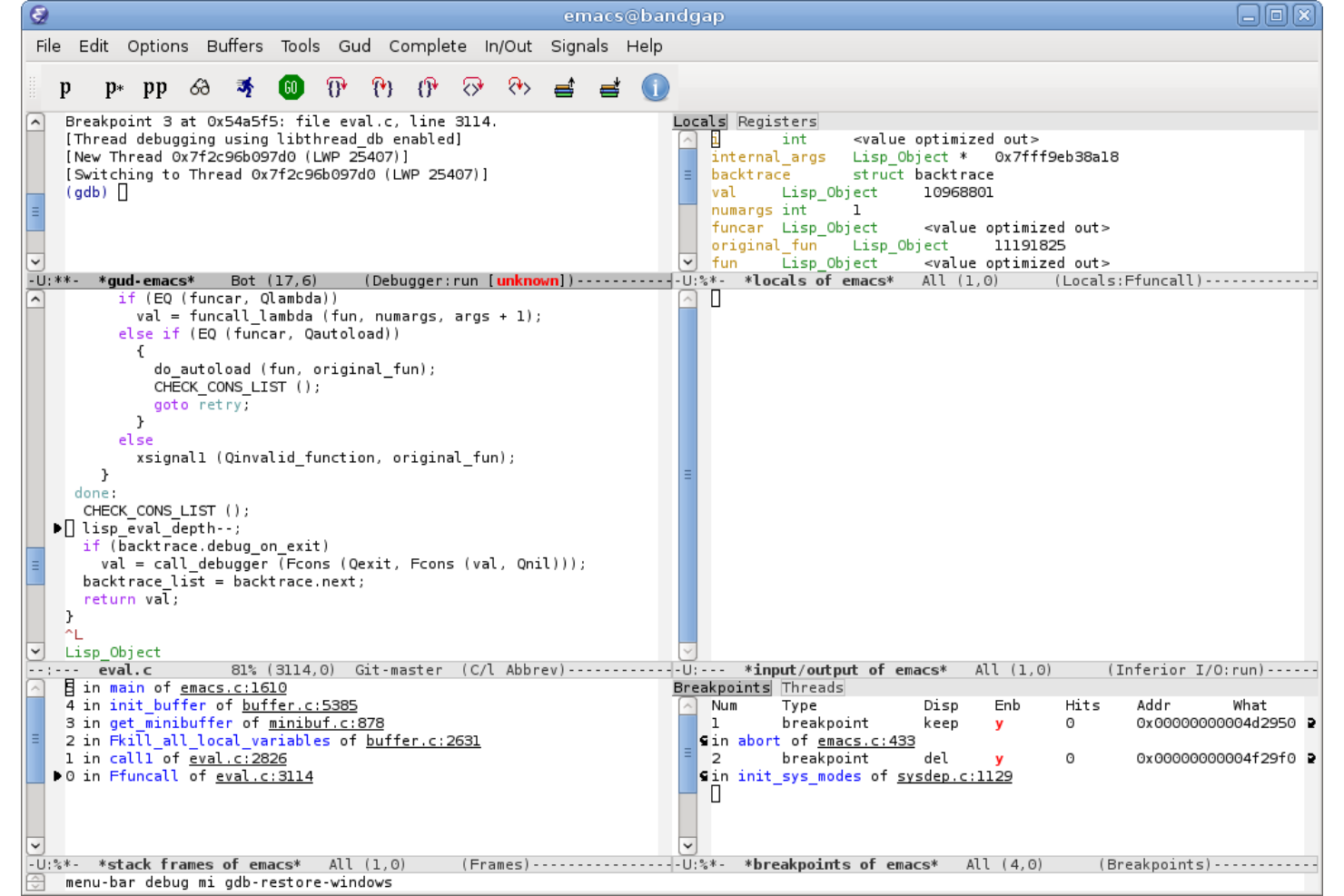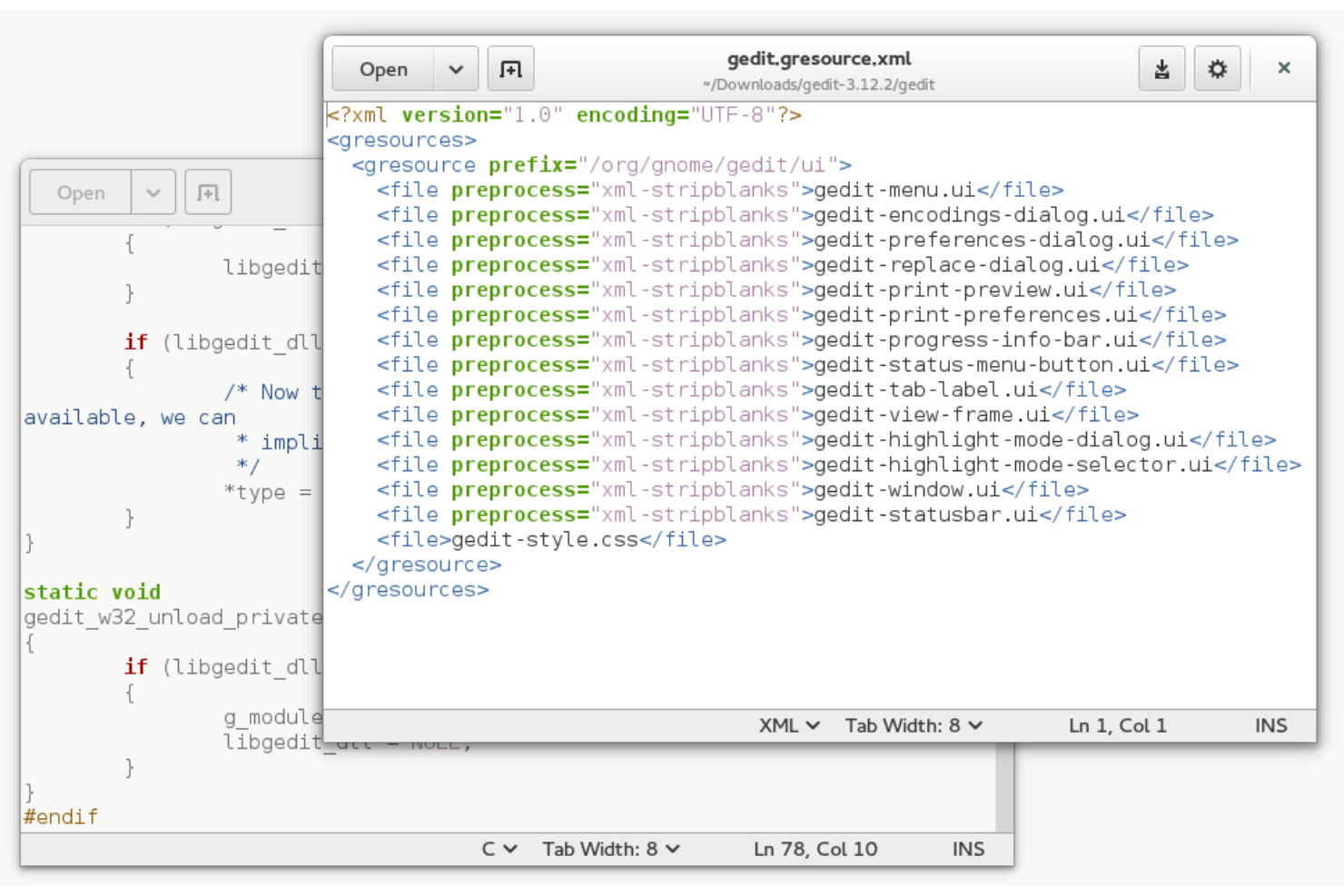10 Best Coding Software For Windows Shortlist
Here's my pick of the 10 best software from the 20 tools reviewed.
Our one-on-one guidance will help you find the perfect fit.
With so many different coding software for Windows available, figuring out which is right for you is tough. You know you want to facilitate software development on Windows operating systems but need to figure out which tool is best. I've got you! In this post I'll help make your choice easy, sharing my personal experiences using dozens of different coding tools for Windows with various teams and projects, with my picks of the best coding software for Windows.
What Is Coding Software For Windows?
Coding software for Windows refers to applications that enable the creation, editing, and management of computer code on Windows operating systems. These tools range from basic text editors to advanced integrated development environments (IDEs), and they support various programming languages. They provide an interface where developers can write, test, and debug code for software development projects specifically tailored for the Windows platform.
The benefits of using coding software for Windows include enhanced productivity and efficiency in software development. These tools offer features like syntax highlighting, auto-completion, and debugging, which streamline the coding process and reduce errors. They cater to a wide array of programming needs, from simple scripting to complex application development. Additionally, their integration with version control systems facilitates collaboration among development teams, making it easier to manage large-scale projects and maintain code consistency.
The 10 Best Coding Software For Windows Summary
| Tool | Best For | Trial Info | Price | ||
|---|---|---|---|---|---|
| 1 | Best for multi-language support | Free plan available | From $8 per month | Website | |
| 2 | Best for syntax highlighting and code intelligence | Not available | From $59.95/license | Website | |
| 3 | Best for providing an extensive plugin system | Free plan available | Free | Website | |
| 4 | Best for built-in Git commands | Not available | Free to use | Website | |
| 5 | Best for building responsive web pages | 7 days free trial | From $20.49/month | Website | |
| 6 | Best for code refactoring | Not available | Open source project and Available for free | Website | |
| 7 | Best for built-in support for many programming languages | Not available | Free | Website | |
| 8 | Best for high execution speed and small program size | Not available | Free to use | Website | |
| 9 | Best for syntax coloring and full Unicode support | Free plan available | Free | Website | |
| 10 | Best for editing files from remote locations | Not available | Free to use | Website |
-

Docker
Visit WebsiteThis is an aggregated rating for this tool including ratings from Crozdesk users and ratings from other sites.4.6 -

Pulumi
Visit WebsiteThis is an aggregated rating for this tool including ratings from Crozdesk users and ratings from other sites.4.8 -

GitHub Actions
Visit Website
Overviews Of The 10 Best Coding Software For Windows
Below, you’ll find an overview of each of the 10 best coding software for Windows with screenshots, key feature highlights, pricing, and pros and cons.
Komodo Edit is a leading editor that enables you to write and manage code with considerable efficiency. It provides standard text editing features that help you write and edit code in multiple languages.
Why I picked Komodo Edit: I picked this software because it supports multiple languages. It doesn’t restrict to one or two programming languages like some other coding tools. With Komodo Edit, you enjoy the flexibility to get things done using the language that is most suitable for your project.
Komodo Edit Standout Features and Integrations
Standout features: It comes with an auto-complete feature, which makes coding easier and more efficient. This feature helps you program faster by suggesting code. Komodo Edit has a change tracking capability that enables you to keep tabs on source code changes. Other interesting features include multiple selections, projects and places manager, skins and icon sets, and minimap.
Integrations include Docker containers, MySQL, Python, Ruby, Golang, Java, PHP, Oracle Database, Node.js, and Perl.
Pros and cons
Pros:
- Get started for free
- Smart code suggestions
- Support for many languages
Cons:
- More customization features required
- The product website needs more content
This is a smart code editor designed for building web pages. WeBuilder helps you create and edit web page code faster with a clean interface, code intelligence, and maximum flexibility.
Why I picked WeBuilder: The software offers powerful syntax highlighting and supports a wide range of languages, including ASP, ASP Net, Perl, Ruby, and Apache. It comes with standard code intelligence capability, which enables code completion and suggestion.
WeBuilder is an all-in-one editor that empowers you to create, edit, and validate code within a single solution. It's fully customizable, allowing you to adjust the text editor and other things to match your team's needs. With this software, you enjoy faster startup, streamlined UI, and speedy development.
WeBuilder Standout Features and Integrations
Standout features: It features a lot of integrated tools, including syntax checkers, validators, debuggers, beautifiers, CSS prefixer, and HTML Tidy. These integrated solutions make the software an all-in-one tool, which provides the necessary things you need to write and edit code. WeBuilder supports smart code reuse and offers a code snippet library and code templates with assignable shortcuts.
There is an advanced search and replace feature that lets you perform a quick search, detailed search, file search, and more.
Integrations include HTML, CSS, JavaScript, PHP, Ruby, and JavaScript. It integrates with syntax checkers, validators, debuggers, beautifiers, etc.
Pros and cons
Pros:
- Loads quickly
- An all-in-one editor
- Clean user interface
Cons:
- Slow customer service
- Limited customizations
VIM is an advanced text editor that’s highly configurable. It’s designed to enable efficient text editing. The software is an improved version of vi editor, which is distributed with most UNIX systems.
Why I picked VIM: It has an extensive plugin system, which allows you to use the software according to your needs. You can connect it with extensions that enable you to perform a wide range of advanced operations, such as enabling IDE behavior, syntax highlighting, and colorization. There is an active community and great documentation. Through the user community, you can connect with more experienced users and get help quickly. And the documentation provides the resources you need to learn how to use VIM.
VIM Standout Features and Integrations
Standout features: VIM supports hundreds of programming languages and file formats. As a result, many programmers can use the tool for their projects. It has a powerful search and replace feature, which makes finding things and effecting changes very easy. Other interesting features include a multi-level undo tree and integration with many tools.
Integrations are available with Codeium, OpenAI, ChatGPT, Tabnine, Gitpod, Kite, Sourcetrail, Coder, Termius, and Code Intelligence.
Pros and cons
Pros:
- Support for many languages
- Open-source with an active community
- Seamless integrations
Cons:
- The GUI needs to be updated
- Setting up plugins can be time consuming
This is a code editor designed to help you create and debug modern web and cloud applications. Visual Studio Code is free, extensible, and highly customizable with industry-leading features.
Why I picked Visual Studio Code: It streamlines source code management and helps you get things done faster with built-in Git commands. This coding software makes working with Git and other SCM providers very easy. You can review diffs, stage files, and make commits from within the editor, making source code management less laborious and faster. Visual Studio Code allows you to push and pull from any hosted SCM service.
Visual Studio Code Standout Features and Integrations
Standout features: The software features IntelliSense, which goes beyond the conventional syntax highlighting and autocomplete to offer smart completions based on variable types, function definitions, and imported modules. Visual Studio Code allows you to debug code right from the editor with breakpoints, call stacks, and an interactive console.
Integrations include GitHub, Crowdin, Deque, Codeanywhere, SwaggerHub, SpiraPlan, CodeSandox, SonarLint, Flowace, and Coverity.
Pros and cons
Pros:
- Customizable and extensible
- Seamless integrations
- Streamlined source code management
Cons:
- It gets heavy while installing extensions for each language
- Complex configurations for beginners
Adobe DreamWeaver helps you build dynamic web pages for any browser or device. It supports multiple programming languages, including HTML, CSS, JavaScript, and more.
Why I picked DreamWeaver: I added it to my list because it enables you to create beautiful websites quickly with maximum flexibility. DreamWeaver has a coding engine that is smart and simplified. The engine makes creating, coding, and managing dynamic web pages very easy. Its visual aids provide the coding support you need to minimize errors and accelerate website development.
Additionally, there are customizable starter templates that enable you to build faster. You can quickly customize the templates to create things like About pages, blogs, and ecommerce pages. Being part of Creative Cloud, DreamWeaver lets you import assets from Creative Cloud Libraries and Adobe Stock.
DreamWeaver Standout Features and Integrations
Standout features include live view editing, multi-monitor support for Windows, and clutter-free UI. The software makes coding faster and more efficient with the live view editing feature, which empowers you to seamlessly edit text, edit image properties, add classes directly, and preview changes instantly without having to switch to another edit mode.
With multi-monitor support for Windows, you can improve your workspaces by displaying them on multiple monitors. DreamWeaver comes with a modern UI, which is streamlined, free of clutter, and allows you to customize your workspaces.
Integrations include Adobe Creative Cloud, Adobe Photoshop, Arlo, Raffle Workspace Search, SalesCart, diib, CSS, Adobe Comp, HTML, and OpenText xPression.
Pros and cons
Pros:
- Step-by-step tutorials
- Easy collaboration
- Starter templates available
Cons:
- It only runs on computers with certain specifications
- Not very easy to learn
Apache NetBeans provides a development environment, tooling platform, and application framework. It comes with a fast and smart text editor that enables you to code software for Windows using a range of code editing capabilities.
Why I picked NetBeans: It offers a feature-rich text editor that enables you to write code with industry-standard editing capabilities. The editor highlights source code syntactically and semantically, enabling you to write neat code seamlessly. With NetBeans IDE Java Editor, you can easily implement code refactoring with the Inspect and Transform feature. It allows code formatting, code folding, code generation, and more.
NetBeans Standout Features and Integrations
Standout features include smart suggestions and support for multiple languages. It uses smart suggestions to help you code faster and more efficiently. The software offers editors, wizards, and templates that enable you to build applications in PHP, Java, and other programming languages. Apache NetBeans supports Write Once, Run Anywhere, and can be installed on all operating systems that support Java.
Integrations include VINYL, DataMelt, CSS, XRebel, JRebel, Java, PHP, JavaScript, TagMyCode, HTML, and Apache Tomcat.
Pros and cons
Pros:
- Available for free
- Support for many languages
- Write once, run anywhere
Cons:
- Steep learning curve
- More information needed on the product website
Geany is a small and lightweight Integrated Development Environment (IDE). It comes with powerful code editing features, such as syntax highlighting, code folding, and auto-completion.
Why I picked Geany: It’s cross-platform (it runs on Windows, Linux, and macOS) and is translated into over 40 languages. This makes it a very easy-to-use tool for programmers who are not good in English or other popular languages. With its built-in support for over 50 programming languages, you have the flexibility to build applications with the coding language of your choice.
Another interesting thing about Geany is that it’s easily customizable. The software provides settings that allow you to tweak the features to suit your needs and preferences.
Geany Standout Features and Integrations
Standout features: Geany supports many file types, including leading programming languages such as PHP, Java, HTML, Python, and JavaScript. It also supports other file types like Diff output, SQL files, and ini-style config files.
Additionally, Geany is flexible. It has a plugin system that lets you expand its features according to your needs. You can easily add new features or improve existing ones by simply integrating with third-party tools.
Integrations include GitHub, MATLAB, Python, PowerShell, CSS, Kotlin, Ruby, Fortran, Clojure, and Swift.
Pros and cons
Pros:
- You can add new features with plugins
- Support for multiple coding languages
- Very easy to use
Cons:
- Faster customer support required
- Some complex plugin settings
Notepad++ is a source code editor and Notepad replacement that supports several languages.
Why I picked Notepad++: I picked Notepad++ due to its customizable features. For instance, it allows you to customize the toolbar icons. There is good online help, featuring a user manual and user community. The user manual helps you to quickly get started with the tool by teaching you how it works, while the user community gives you access to more experienced users who can help you understand the software better.
Notepad++ Standout Features and Integrations
Standout features: Notepad++ has a higher execution speed and a small program size. This is because it's written in C++ and uses pure Win32 API and STL. As a result, the software allows you to build faster with minimal power consumption due to its smaller program size. With Notepad++, you can perform as many operations as possible without losing user-friendliness.
Integrations include MATLAB, Python, PowerShell, Fortran, Java, Visual Basic, Swift, Scheme, Haskell, and Rust.
Pros and cons
Pros:
- Customizable features
- High execution speed
- Get started for free
Cons:
- Hard to master by beginners
- Limited to Windows
Emacs is a text editor that is extensible and customizable. It features an interpreter for Emacs Lisp, which is a dialect of the Lisp coding language with extensions to support text editing.
Why I picked Emacs: It supports advanced code editing features, like syntax coloring. Emacs has content-aware editing modes for many file types. The tool has full Unicode support for almost all human scripts. It's highly customizable. Using Emacs Lisp code or a graphical interface, you have the flexibility to adjust the editor to suit your team's needs and preferences.
Emacs Standout Features and Integrations
Standout features: In addition to text editing, it offers a wide range of functionality, including a project planner, debugger interface, mail and news reader, calendar, IRC client, and more. Emacs comes with integrated tools that make development faster and easier.
There is a packaging system for downloading and installing extensions so you can extend the software's functionality according to your needs.
Integrations include Sourcegraph Cody, Codeium, Tabnine, Wing Python IDE, Sourcetrail, Scheme, Common Lisp, XML, Termius, Dash, and JSON.
Pros and cons
Pros:
- Very customizable
- Tutorials for new users
- Good documentation
Cons:
- It takes time to master
- Documentation is not detailed
gedit is a multi-purpose text editor that’s easy to use. You can use it to write simple notes and documents. When the advanced features are activated, it’s great for software development.
Why I picked gedit: gedit is great for boosting collaboration among remote teams. It provides some features that allow users to edit files from remote locations. The software makes coding and text editing faster since people can share files and update them regardless of their physical locations. Changes can be easily made at any time since teams can work from different time zones.
gedit has a flexible plugin system, which you can use to dynamically add new advanced features. The capabilities of this software are unlimited. You can get it to do what you want by plugging in a third-party tool.
gedit Standout Features and Integrations
Standout features: gedit lets you perform syntax highlighting for many programming languages, including Shell, XML, C, C++, and Markdown. It supports auto-indentation, text wrapping, spell-checking, auto-completion, integrated file browser, search and replace, and configurable fonts and colors. The software allows you to back up your files so you don’t lose important files when things go wrong.
Integrations include Python, CSS, Java, Perl, XML, Markdown, JavaScript, C++, C, and HTML.
Pros and cons
Pros:
- Free code editor
- Good user manual
- Very flexible
Cons:
- Product info isn’t detailed
- Sophisticated configurations
Other Options
In addition to the 10 best coding software for Windows I’ve reviewed, here are some other solutions that are worth checking out:
- Sublime Text
For context-aware auto-complete
- BlueGriffon
For WYSIWYG authoring
- IntelliJ IDEA
For remote development teams
- UltraEdit
Text editor for large files
- Microsoft Visual Studio
IDE for .NET and C++ developers on Windows
- Light Table
For embedding anything you want, from graphs and games to running visualizations
- SnipAway
For running code folding and multiline selection
- Brackets
Open-source code editor with inline editors and live preview capability
- jEdit
For providing auto-indent and syntax highlighting for more than 200 languages
- Eclipse
For multiple language support and unlimited customization
Other QA and Coding Software Reviews
Do you want to learn more about coding software and quality assurance? Read the following review articles.
Selection Criteria for Coding Software For Windows
Here’s a summary of the main selection and evaluation criteria I used to develop my list of the best code editors for Windows for this article:
Core Functionality
The core functionalities I considered while I was researching this article include:
- Support for multiple programming languages
- Cross-platform capabilities
- Debugging
- Customizability
Key Features
I looked out for the following key features in all the tools before adding them to the list:
- Collaboration: Collaboration features allow remote teams to work together on tasks efficiently and productively. Coding software with advanced collaboration capabilities empowers remote teams to work together in real time, share files, and communicate effectively.
- Syntax highlight: It enables you to display source code in different colors and fonts. This helps you improve the readability and context of the text.
- Auto-completion: This feature helps you code faster by automatically predicting and completing the current word or code you’re typing. Advanced editors use the context of the code you’ve typed to predict what you’re to type next.
- Code folding: With code folding, you can selectively hide or display parts of a document. This helps you to manage large amounts of text and improve readability by displaying sections that you want.
Usability
I recommended tools that are easy to get started with. I considered coding software for Windows that comes with training resources, responsive customer service, a very intuitive user interface, and other things that make using new software easy, such as webinars, ongoing learning opportunities, and blogs.
Software Integrations
I selected software that allows you to integrate third-party tools. Software integrations let you streamline development processes by bringing your toolset together. For instance, you can integrate your Java IDE with your SCM provider and manage the source code right from within the editor.
Pricing
I always look out for solutions that are fair, scalable, and transparent in their pricing. They include freemium plans, free trials, or free demos to make getting started easier.
People Also Ask
Here are some questions that are frequently asked about coding software for Windows:
What are the benefits of coding software for Windows?
The benefits of a coding editor for Windows include fast development, integration with other software development tools, streamlined workflow, improved collaboration, and timely resolution of code errors.
Who uses coding software for Windows?
Web development engineers, web designers, and developers in general use code editors for Windows to build products. In addition to developing software, some text editor software allows non-technical users to create regular or ordinary texts. When coding software includes debugging or testing capabilities, it can be used by QA professionals.
What software do I need for coding?
The specific software tools you need will depend on the programming language you want to learn and the type of coding you want to do. Here are some common software tools that you may need:
- Text editor: A text editor is a software tool that allows you to write and edit code. Most computers come with a simple text editor pre-installed, such as Notepad (for Windows) and TextEdit (for macOS). However, these editors lack many of the useful features that coding-specific text editors have.
- Integrated Development Environment (IDE): IDE software are applications that provide comprehensive facilities to computer programmers for software development. It typically includes a code editor, a compiler or interpreter, and a debugger, among other tools.
- Compiler: A compiler is a software tool that translates code written in one programming language into another language, usually machine code. Compilers are used to create executable files that can be run on a computer.
- Version control system: A version control system is a software tool that helps you keep track of changes to your code over time. It allows you to collaborate with other developers, revert to previous versions of your code, and manage different versions of your code.
- Debugging tools: Debugging tools are software tools that help you find and fix errors in your code. They allow you to step through your code line by line, set breakpoints, and inspect variables.
- Libraries and frameworks: Libraries and frameworks are pre-written code that you can use to speed up your development process. They provide common functionality that you can use in your own code.
It’s important to note that the specific software tools you need will depend on the programming language you want to learn and the type of coding you want to do. However, a good text editor and a version control system are essential tools for any programmer.
Fast-Track Your Next Project With the Best Coding Software for Windows
Equip your team with the best coding tool for Windows. It helps your team members code collaboratively and get things done faster, especially when you integrate with other software development tools. Go through the coding systems outlined above to find the one that suits your project needs and team’s preferences.
Do you have any questions or something you would like us to mention in the next article? Let us know in the comments section. And if you want to learn more about software testing and the QA industry, subscribe to our newsletter to get the latest articles and podcasts from industry experts.





